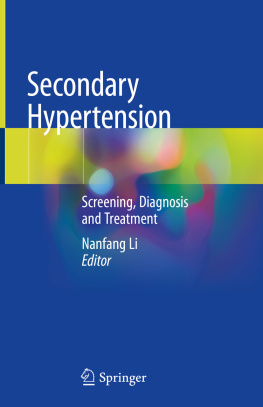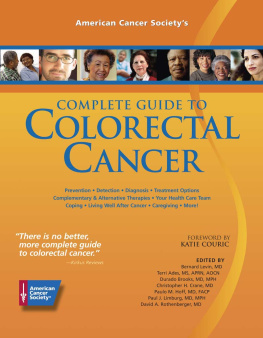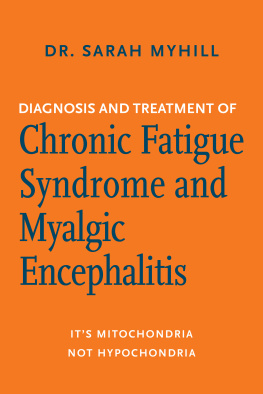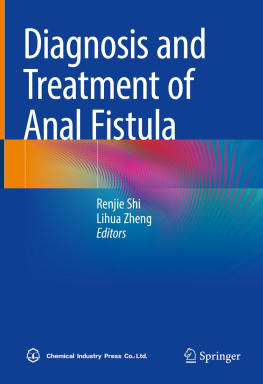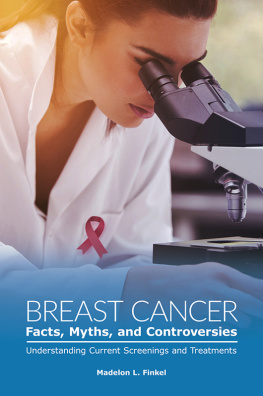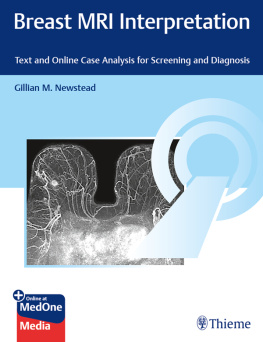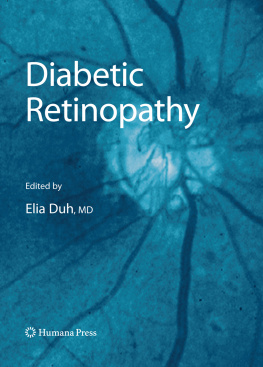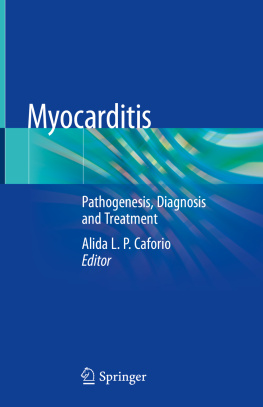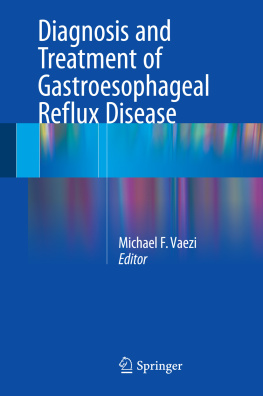Nanfang Li - Screening, Diagnosis and Treatment
Here you can read online Nanfang Li - Screening, Diagnosis and Treatment full text of the book (entire story) in english for free. Download pdf and epub, get meaning, cover and reviews about this ebook. year: 2020, publisher: Springer Singapore, genre: Home and family. Description of the work, (preface) as well as reviews are available. Best literature library LitArk.com created for fans of good reading and offers a wide selection of genres:
Romance novel
Science fiction
Adventure
Detective
Science
History
Home and family
Prose
Art
Politics
Computer
Non-fiction
Religion
Business
Children
Humor
Choose a favorite category and find really read worthwhile books. Enjoy immersion in the world of imagination, feel the emotions of the characters or learn something new for yourself, make an fascinating discovery.
- Book:Screening, Diagnosis and Treatment
- Author:
- Publisher:Springer Singapore
- Genre:
- Year:2020
- Rating:4 / 5
- Favourites:Add to favourites
- Your mark:
- 80
- 1
- 2
- 3
- 4
- 5
Screening, Diagnosis and Treatment: summary, description and annotation
We offer to read an annotation, description, summary or preface (depends on what the author of the book "Screening, Diagnosis and Treatment" wrote himself). If you haven't found the necessary information about the book — write in the comments, we will try to find it.
Screening, Diagnosis and Treatment — read online for free the complete book (whole text) full work
Below is the text of the book, divided by pages. System saving the place of the last page read, allows you to conveniently read the book "Screening, Diagnosis and Treatment" online for free, without having to search again every time where you left off. Put a bookmark, and you can go to the page where you finished reading at any time.
Font size:
Interval:
Bookmark:


This Springer imprint is published by the registered company Springer Nature Singapore Pte Ltd.
The registered company address is: 152 Beach Road, #21-01/04 Gateway East, Singapore 189721, Singapore
Hypertension is the most important risk factor for cardiovascular diseases. It remains one of the greatest threats to human health nowadays. Hypertension can be divided into essential hypertension and secondary hypertension. A large number of studies on differential diagnosis have shown an increase in the number of secondary hypertension, and the prevalence of secondary hypertension has increased to over 1015% among the hypertensive population.
However, secondary hypertension is not easy to be diagnosed because of its insidious and complicated causes. Its detrimental effects include not only the final occurrence of cardiovascular and cerebrovascular diseases but also the accompanying damage of target organs caused by hypokalemia, hyperaldosterone, increased cortisol, high renin, and high catecholamine.
The etiology of secondary hypertension includes cardiovascular diseases, endocrine diseases, kidney diseases, sleep medicine, autoimmune diseases, and mental and psychological diseases. Therefore, the screening, diagnosis, and treatment are also a complicated process. Clinicians are required to do careful physical as well as detailed laboratory examinations to finally identify the causes of hypertension and carryout individualized treatment.
The Center of Hypertension of the Peoples Hospital of Xinjiang Uygur Autonomous has been engaged in hypertension clinical work and scientific research for more than 20 years and has a lot of clinical experience on secondary hypertension diagnosis and treatment. The authors completed the bookSecondary Hypertension: Screening, Diagnosis and Treatmentby consulting a large amount of research material combining with the clinical practice and research experiences of the Center. This book is a systematic comprehensive reference book about screening, diagnosis, and treatment of secondary hypertension. It includes the description of the occurrence mechanism, clinical manifestations, diagnosis, and treatment of secondary hypertension, which is helpful for the early diagnosis and treatment of secondary hypertension, and it is a valuable reference book for clinicians, especially professional physicians and researchers who are studying and treating hypertension.
Gratefully acknowledge to Dr. Jina Yili, Ms.Kripa Guruprasad and Ms. Mariesha Justin for their great work in editing and publishing this book.
The high prevalence of hypertension is closely related to cardiovascular and cerebrovascular diseases, which has caused great harm to human health. We know that hypertension can be divided into primary hypertension with unknown causes and unclear pathogenesis and secondary hypertension with clear etiology. Traditionally, secondary hypertension accounts for only 510%. However, with the in-depth study of the etiology of hypertension and the improvement of the clinical diagnostic techniques, the detection rate of secondary hypertension has far exceeded our expectations, for example, obstructive sleep apnea syndrome (OSAS) is one of the most important secondary hypertension, accounting for at least 30% of adults with hypertension. Only a part of primary aldosteronism is combined with hypokalemia, accounting for 515% of patients with hypertension. It could be said that all hypertension has certain causes. As for the so-called essential hypertension, it is not known by us or we are unable to understand the cause. Hypertension is a common clinical manifestation of many disorders and intermediate link in their pathophysiological process. Different hypertension individuals or populations may have different mechanisms, hypertension mechanisms, and the same individual may have multiple blood pressure elevated mechanisms at the same time.
The etiology of secondary hypertension is often hidden and complex, involving cardiovascular diseases, endocrine diseases, kidney diseases, sleep medicine, mental illness, and other disciplines, and at the edge of above disciplines. Due to the intensive clinical division, the number of cases of secondary hypertension that has been reported is much incompatible with the actual prevalence. While the etiological detection and treatment of the secondary hypertension can not only benefit blood pressure control and target organ damage reduction, but also cure hypertension and greatly reduce the patients medical burden through long-term treatment. We can imagine that the individualized treatment of hypertension, including etiological treatment, is the higher field of hypertension treatment.
Therefore, we (Hypertension Center of the Peoples Hospital of Xinjiang Uygur Autonomous Region) have been engaged in the diagnosis and differentiation of secondary hypertension for a long time and successfully screened lots of secondary hypertension. We have also consulted a large number of data and documents, gained our own clinical experience and understanding, based on the above, we write this booksecondary hypertension. It focuses on renal parenchymal hypertension, renal vascular hypertension, hypertension caused by other renal diseases, endocrine hypertension, hypertension caused by neurogenic and psychiatric disorders, as well as cardiovascular diseases, obstructive sleep apnea syndrome, drug-induced and exogenous hypertension, secondary hypertension induced by connective tissue diseases, blood system diseases, pregnancy-induced hypertension, and nearly hundreds of diseases. Each disease is described from general level to details, especially the mechanism of hypertension, standardized diagnosis, and treatment process.
Font size:
Interval:
Bookmark:
Similar books «Screening, Diagnosis and Treatment»
Look at similar books to Screening, Diagnosis and Treatment. We have selected literature similar in name and meaning in the hope of providing readers with more options to find new, interesting, not yet read works.
Discussion, reviews of the book Screening, Diagnosis and Treatment and just readers' own opinions. Leave your comments, write what you think about the work, its meaning or the main characters. Specify what exactly you liked and what you didn't like, and why you think so.

